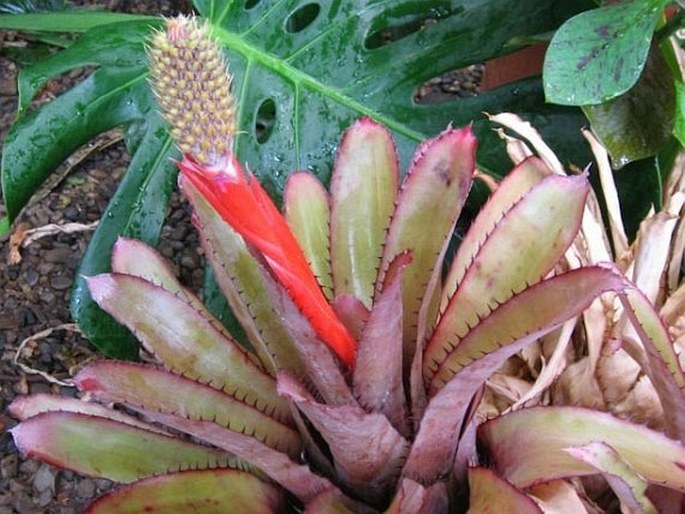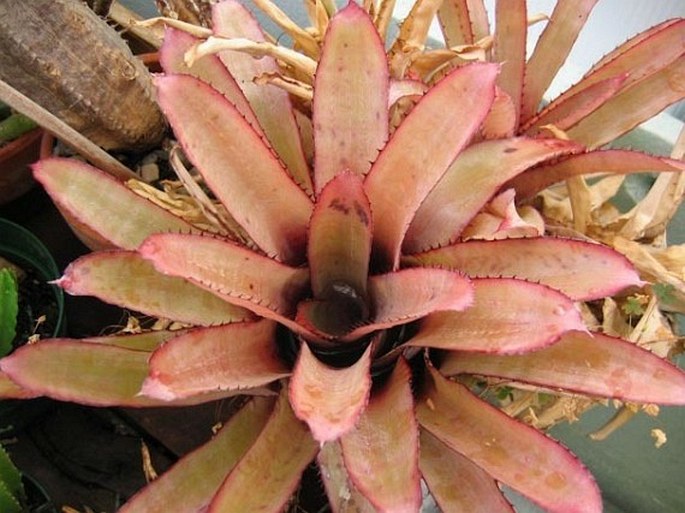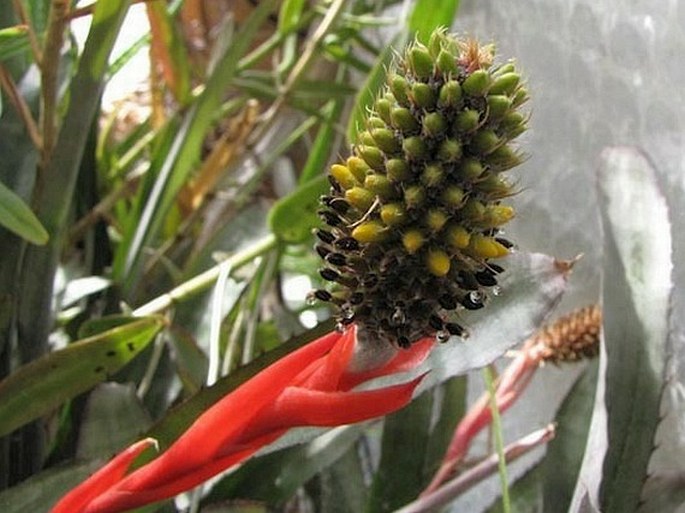Syn.: Aechmea triticina var. capensis L. B. Sm., Echinostachys pineliana Brongn. ex Planch., Echinostachys rosea Beer, Macrochordion pinelianum (Brongn. ex Planch.) Lem., Pothuava pineliana (Brongn. ex Planch.) L. B. Sm. et W. J. Kress, Pothuava triticina var. capensis (L. B. Sm.) L. B. Sm. et W. J. Kress
Family: Bromeliaceae Juss.

Distribution: Southeastern part of Brazil, states of Espirito Santo, Minas Gerais and Rio de Janeiro (Mata Atlântica).
Ecology: This plant requires bright light and therefore, in the forests it grows epiphytically in crowns of trees.
Description: Monocarpic, tank bromeliad of small size, about 30–50 cm in diameter, many-leaved rosette with leaves about 30–40 cm long and 3 cm wide, ligulate, variable colour depending on available light, shades of green with reddish margins, dark spines along edges, gray lepidote on both sides. Inflorescence is a spike, 30–40 cm tall, erect, lepidote, covered with bright red scape bracts, sharply pointed, 8–12 cm long, panicle of flowers is cylindrical to ovoid, sepals greenish yellow, 5 mm long with 2 mm long spine (mucronulate), petals 8 mm long, usually yellow, occasionally white; ovary 3 mm long, white woolly; fruit a white berry.
Notes: Majority of bromeliads have highly developed water retaining trichomes at different quantities from species to species. In common language they are called scales and hence the adjective lepidote (from Greek lepis-scale).
Also majority of tank bromeliads are good source oh convenient habitat for variety of fauna and microfauna like mosquito larvae and small frogs with a complete life cycle.




These images were taken in culture (Canada).


